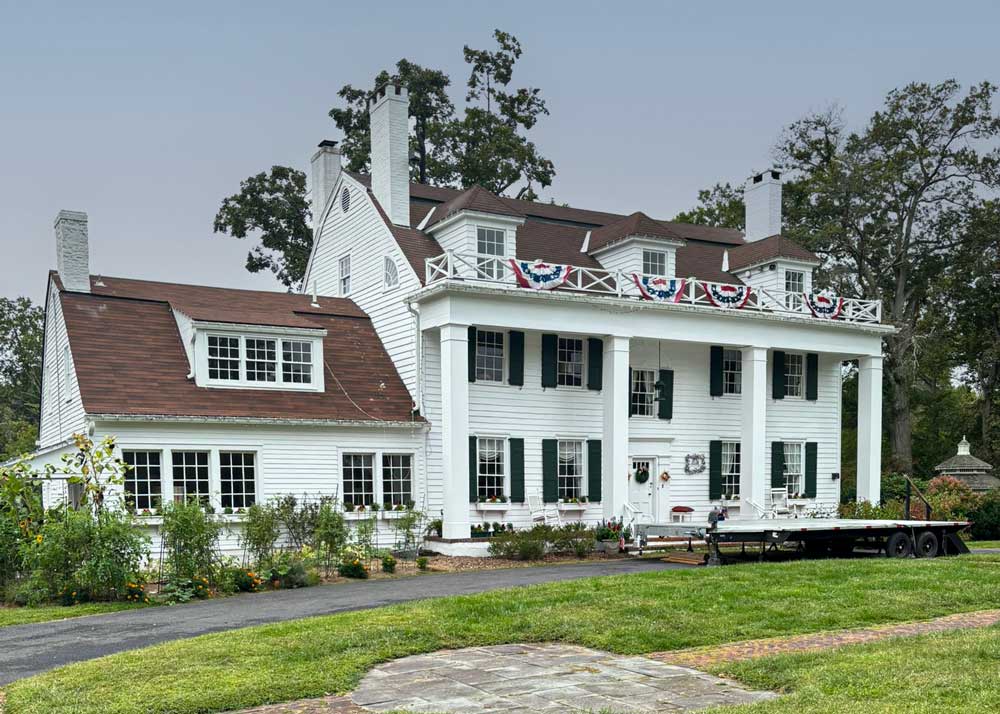
At the western edge of the Great Swamp, less than a mile from downtown Basking Ridge, lies the fifty-acre Boudinot-Southard-Ross Estate—also known today as The Ross Farm. This historic property has been home to several prominent families whose legacies shaped both New Jersey and the nation.
Its first notable owner, Elias Boudinot, was a Founding Father, President of the Continental Congress in 1783, and later Director of the U.S. Mint. He purchased the land in the 1770s and lived there briefly before selling to Henry Southard in 1785. Southard, a Revolutionary War veteran and long-serving Congressman, raised his son Samuel Southard on the property. Samuel went on to become New Jersey’s 10th Governor, U.S. Senator, and Secretary of the Navy under President Monroe.
In the 20th century, the estate became home to Edmund Ross, a gentleman farmer and horse breeder who purchased part of the property in 1952. After his death, the Ross family preserved the land until selling it in 2005 to Somerset County, ensuring its permanent protection as open space. In 2009, the estate was placed on both the New Jersey Register of Historic Places and the National Register of Historic Places.
Since 2015, the Somerset County Parks Commission has partnered with the nonprofit Friends of the Boudinot-Southard-Ross Estate, who bring the property to life with cultural and historical programming. “Because we’re on Somerset County property, they cut the lawns and maintain the buildings,” explains Friends President David Becker. “But our group—and Trilogy Repertory Company, another nonprofit based here—provide all the content. When it opens to the public, it’s our volunteers who host and make these events happen.”
That volunteer spirit is the backbone of the site. More than two dozen businesses and about fifty families support the farm financially, but it’s the 150-plus volunteers each year who sustain the programming. “Human capital is our strength, more than money,” Becker notes.
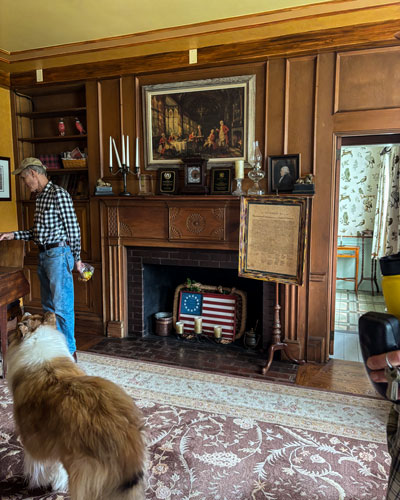
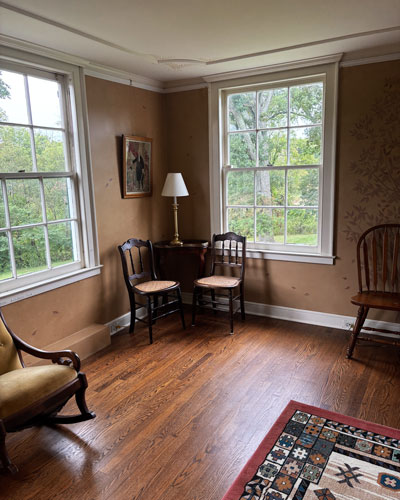
At the heart of the estate stands the 18th-century farmhouse, a blend of Federal and Georgian architecture that has seen countless alterations over the centuries. “In many ways, that house is an example of what wealthier people could do to change things around,” says Becker. “The entrance you see today used to be the back of the house until it was reoriented in the 1940s.” By the time of Edmund Ross’s passing, the house needed major rehabilitation. Its revival began in 2006, when the Women’s Association for Morristown Medical Center chose it for the Thirteenth Mansion in May Designer Showcase, for which the organizers cleaned, updated, and repurposed the space. “They didn’t put house precisely back to the way it was, but they did make it more usable, cleaned it up and gave us a good base of a multi-use space on all three floors,” remarks Becker. Remnants of the designers’ work still accentuate the décor through much of the house, and many of the rooms are outfitted with furniture and items donated by the community. A center-hall mural, recently completed by artist, Michelle Cirotti, chronicles the estate’s families and its ongoing legacy. There are portraits of Boudinot, his wife and daughter; Henry Southard, his wife and sons Samuel and Isaac, and a family portrait of Edmund and Margaret Ross with their five children. Along the opposite wall are depictions of the Giving Garden, the property entranceway, and the farm’s barn.
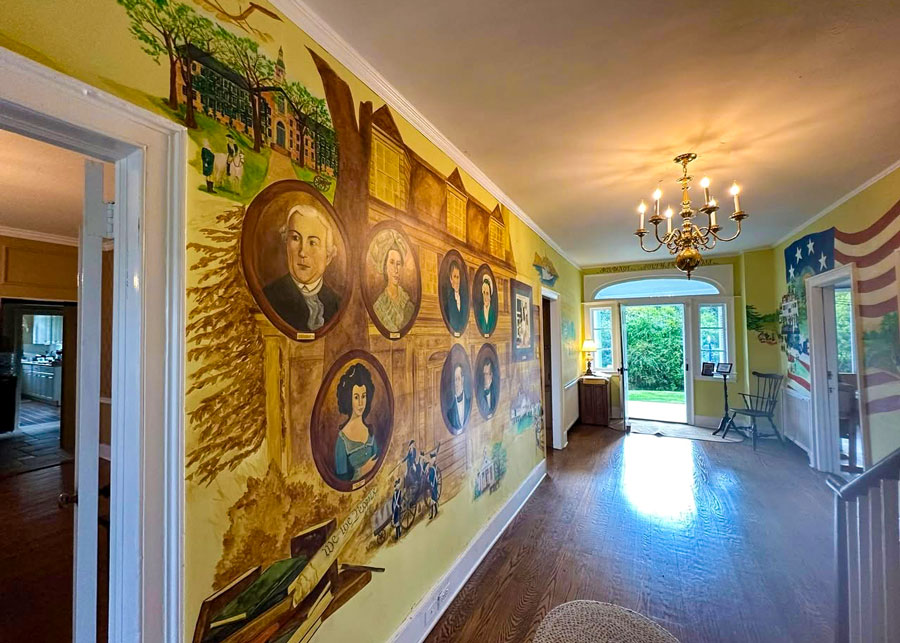
The annual music series has become a central part of that legacy, illustrated in Michelle’s mural that portrays a performing band at the mansion’s entrance. Cirotti’s husband, Joe, and his esteemed trio are some of many well-regarded regional musicians and touring professionals who perform on a volunteer-built portable stage in front of the farmhouse or inside the two-story bank barn. The mid-nineteenth-century structure also provides an occasional stage for the Trilogy Repertory Company and houses a costume shop, props and set-building space. The barn and grounds hum with activity, making the Ross Farm a hub of arts and culture.
The estate also nourishes the community in a more literal way with Boudinot’s Giving Garden established on the property in 2015 by volunteers and local churches. “We built the first couple beds and volunteers started to show up,” recalls Becker. “Businesses donated seeds, the volunteer army grew, and we’ve expanded five times since.” The garden now produces thousands of pounds of vegetables and honey for three local food banks. In its historical and educational context, the garden has always engaged church and scout groups. A highlight of the garden is its perennial and historic herb bed, inspired by Caroline Foster’s garden at Fosterfields Living Historical Farm in Morristown. Many of its herbs came from the Wick Farm kitchen garden at Jockey Hollow National Park, reflecting the kinds of plants that would have been used in an 18th- or 19th-century kitchen garden. Scouts, church groups, and families all pitch in, working side by side in rectangular beds overflowing with vegetables, herbs, and flowers.
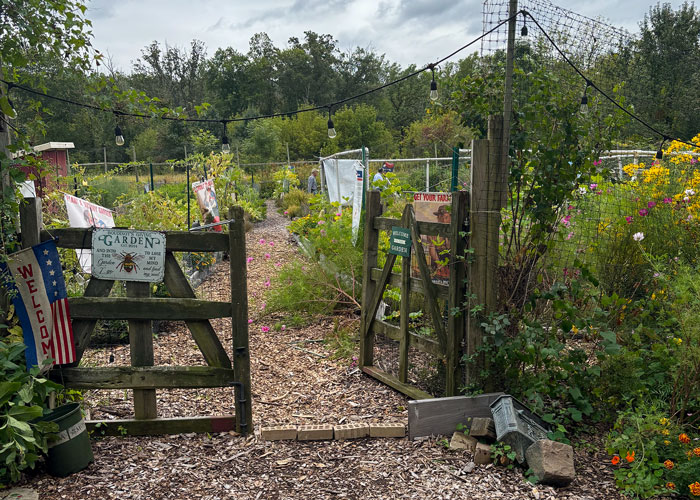
In the farmyard rests a piece of famous 600-year-old white oak that, until 2017, stood in the Presbyterian Churchyard in Basking Ridge, a remnant of the vast thick forests that long ago gave way to the agricultural domain of the Garden State. Beyond the farmyard, fields once tilled for crops and grazed by horses remain as a vast open lawn that rises from the barnyard to the crest of a knoll crowned by a sculpture posed like a ballerina looking across to the forest edge.
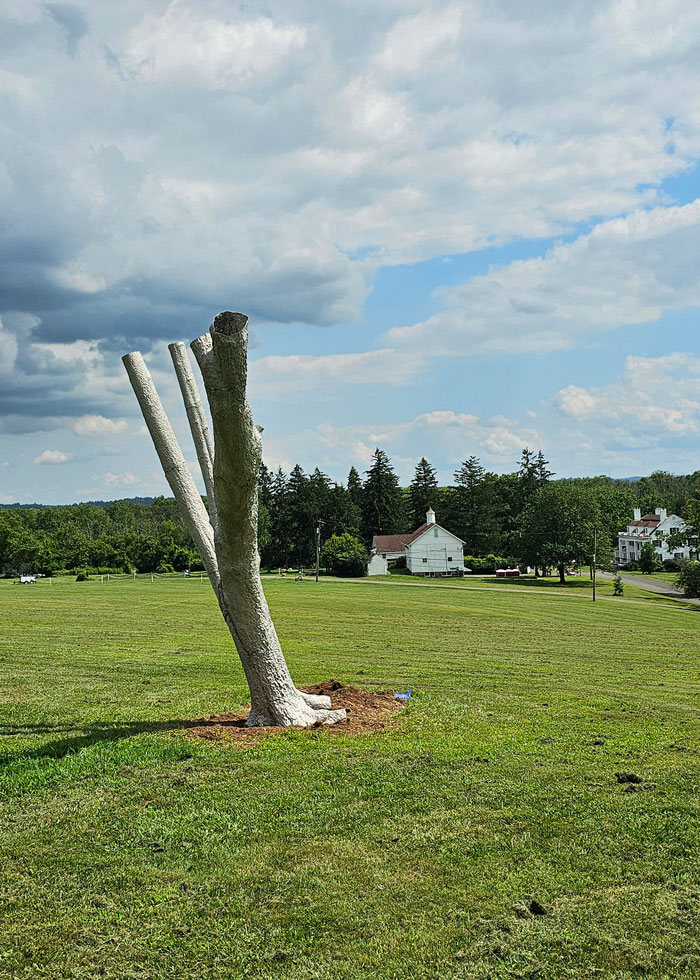
The form was molded from a tree with heat-treated hammered aluminum alloy by sculptor Bob Lobe. For fifty years, Lobe has created sculpture from the remote forest models along the Kittatinny Ridge in Sussex County. For an artist walking in these woods, the earth gushes a torrent of shapes and forms, angles and curves, textures and light, all vibrantly alive, yet frozen in a rhythm of life far different than our own. Lobe started employing pneumatic tools in 1985, hauling an air compressor through the woods to facilitate stretching and shrinking the metal, encapsulating landscape. "Most of the work is setting up; the actual tooling goes very rapidly," Lobe explains. "I know what's going to happen. It's like dress making." With the hammer, he gathers the metal around the form, adding texture, which expands the surface area of the aluminum sheet.
Lobe’s work can be seen in numerous public collections, most notably the Guggenheim and Whitney Museums in New York City; the National Gallery in Washington, D.C.; the Cleveland Museum of Art, the Museum of Contemporary Art in Los Angeles; the Houston Museum of Fine Arts; and the Walker Art Center in Minneapolis, and lately at the Morris Museum. Becker attended the Morristown opening last fall where Lobe spoke about his work and process. Dave asked lots of questions and sent Bob a link to Ross Farm’s website. From there the idea culminated in this summer’s installation of Lobe’s “X-Ray”, created in 1993-96. “A sculpture shows up to people, and it's got space and presence," explains Becker. “It also prompts us to be able to ask things like, ‘Well, why do you think it's here? What do you see? What in the name is provocative?’ People forget, as the lands were cleared for agriculture, farmers also had to keep significant portions as woodlands to support heating and cooking needs in order to survive. Among many things, it is a reminder, environmentally, about the past.” armers had to keep significant portions of their properties as woodlands to support heating and cooking needs in order to survive.
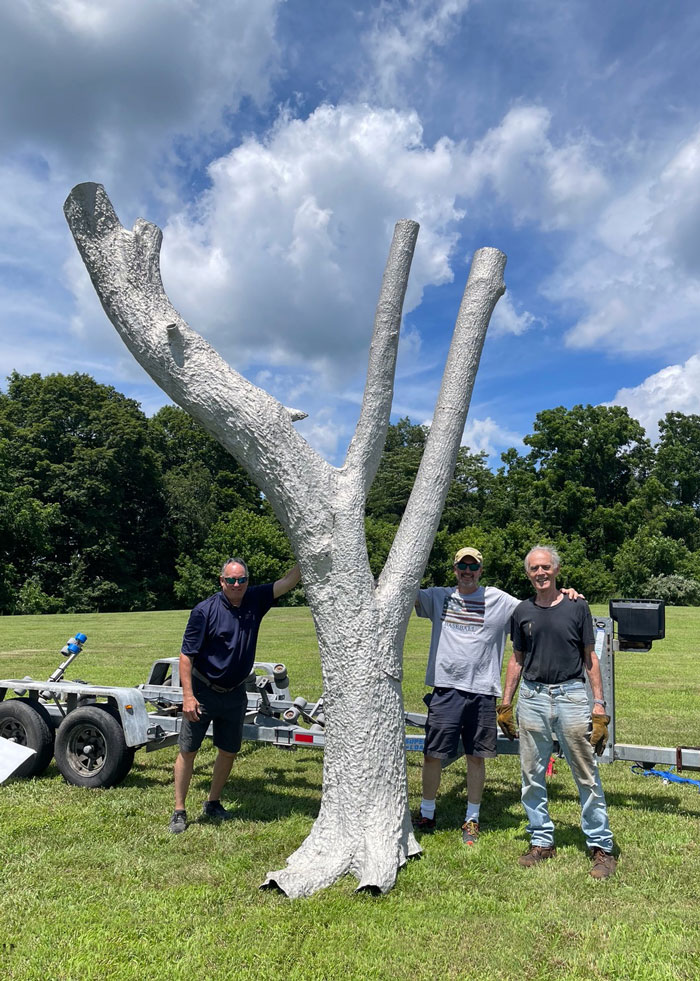
From its pre-Colonial roots to its vibrant present, the Boudinot-Southard-Ross Estate continues to thrive through the dedication of volunteers and community partners—an enduring reminder of history, culture, and generosity in the heart of Somerset County.
The Ross Farm is located at 135 Norh Maple Ave., Basking Ridge. Check the website for more information.
Paths of green, fields of gold!
Even today, if you needed a natural hideout—a really good one—Jonathan’s Woods could work.
The Jacobus Vanderveer house is the only surviving building associated with the Pluckemin encampment.
The Millstone Scenic Byway includes eight historic districts along the D&R Canal, an oasis of preserved land, outdoor recreation areas in southern Somerset County
Dedicated to preserving the heritage and history of the railroads of New Jersey through the restoration, preservation, interpretation and operation of historic railroad equipment and artifacts, the museum is open Sundays, April thru October.